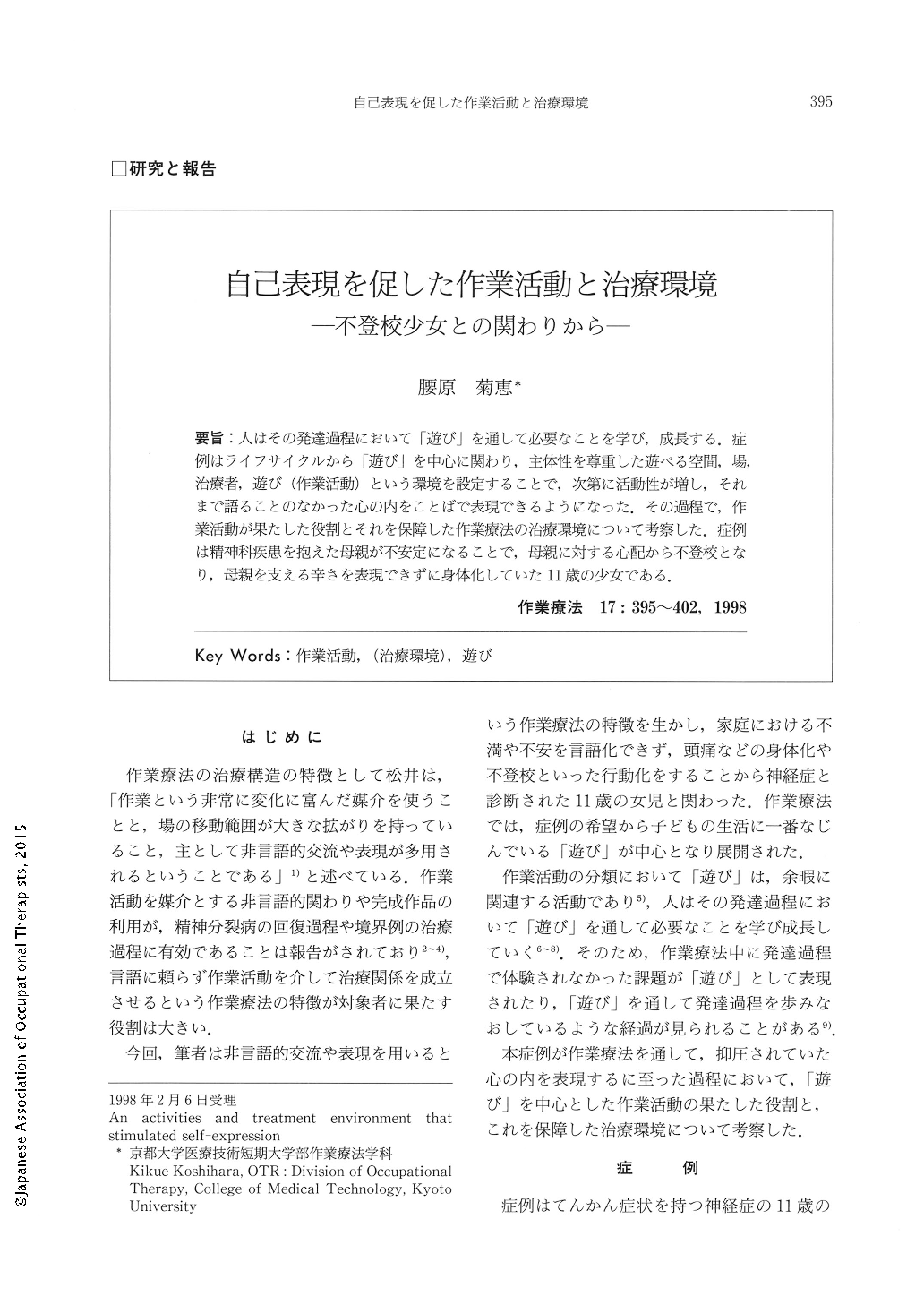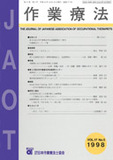Japanese
English
- 販売していません
- Abstract 文献概要
- 1ページ目 Look Inside
- 参考文献 Reference
- サイト内被引用 Cited by
要旨:人はその発達過程において「遊び」を通して必要なことを学び,成長する.症例はライフサイクルから「遊び」を中心に関わり,主体性を尊重した遊べる空間,場治療者,遊び(作業活動)という環境を設定することで,次第に活動性が増し,それまで語ることのなかった心の内をことばで表現できるようになった.その過程で,作業活動が果たした役割とそれを保障した作業療法の治療環境について考察した.症例は精神科疾患を抱えた母親が不安定になることで,母親に対する心配から不登校となり,母親を支える辛さを表現できずに身体化していた11歳の少女である.
This case involved an 11-year-old girl suffering from psychologically induced pain exacerbated by not attending school due to the instability of her mother, who had a psychiatric disorder. The girl could not express the pain she felt with regard to giving her mother emotional support, and she tended to dramatize her complications. Occupational therapists, however, listened to her with respect for her situation. Consequently, therapists set up an environment for therapy, including space, place, and play (activities), in which she could enjoy herself. Gradually, she became active, and she started to talk about her inner-most feelings with regard to her difficult situation. During the procees of therapy, her activities actually became her self-expression. These activities served to mediate and objectify her difficulties ; this receptive environment became a necessity for the expression of her inner-most feelings. This receptive environment consisted of building self esteem, autonomy, time-creation, an expanding of place and space, and a permanent correspondence with occupational therapists.

Copyright © 1998, Japanese Association of Occupational Therapists. All rights reserved.


